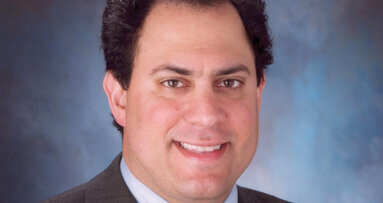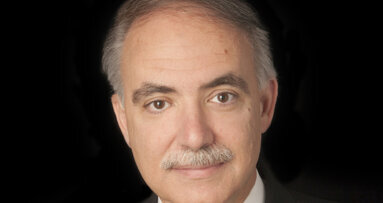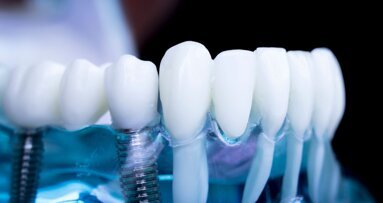NEW YORK, NY, USA: In 2007, when the American Heart Association changed the recommendations for antibiotic prophylaxis for routine dental care in patients with valvular heart disease, some dentists scoffed, others rejoiced. The policy change was the first of its kind since the organization began recommending prophylaxis for routine dental procedures 50 years earlier.
Considering the fact that an estimated 2 percent of the U.S. population carries the diagnosis of mitral valve prolapse, a relatively benign heart-valve disorder that had, until 2007, required administration of antibiotics in advance of any dental procedure (including routine cleaning), this was indeed a noteworthy change.
The use of antibiotics for the intended prevention of endocarditis in individuals at higher risk (those with valvular pathology) had far reaching effects on antibiotic resistance rates, the cost of medical and dental care, the number of emergency visits for allergic reactions to medications, even overall compliance with routine teeth cleaning visits.
Some dentists chose to ignore the revised recommendations, responding that the risks of bacterial endocarditis were outweighed by the benefits of antimicrobial administration, regardless of population effects. Other dentists were not aware that the recommendations had even been changed. Most have complied with the current recommendations and do not insist on antibiotic prophylaxis unless so indicated by evidence-based research.
Health policy has, in many ways, changed the way that dentists and dental implant practitioners practice. The influences of various medical societies will continue to have an impact for dental implant practitioners in the years to come given the expanding use of electronic health records, the institution of government-driven health reform programs and the paradigm shift from practitioner instinct to evidence-based decision making.
These policy changes are intended for the betterment of societal health care as a whole, however, they do not always reflect a consensus among medical and dental societies nor are they always readily applicable to the patient directly in front of us.
A hotly contested topic between orthopedic surgeons, dentists and infectious disease experts involves the extent to which antibiotic prophylaxis prior to specific dental procedures is required to prevent bacterial seeding of the joint in patients who have received total joint replacements.
Previously, the three groups aligned and supported antibiotic prophylaxis for individuals who had had joints replaced within two years and those at higher risk due to medical conditions, however, a more recent publication from the American Association of Orthopaedic Surgeons (AAOS), put forth in February 2009 and revised in June 2010, states that all patients with total joint replacements should be given antibiotic prophylaxis for specific medical and dental procedures for the rest of their lives.
The impetus, consequences and controversy of this change are still being widely debated. In response to the AAOS statement, the American Academy of Oral Medicine issued a pointed rebuttal debunking the reasoning behind the AAOS statement paper and reminded practitioners to make their own clinical decisions beyond the content of the 2009 publication. They also reminded practitioners that the cost of single-dose treatment in advance of dental procedures for all individuals with a total joint replacement would approach $60 million based on 2009 data.
This amount would be projected to increase, of course, as our aging population is increasing in number and as the number of joint replacements so increases.
Dental implant practitioners find themselves in the middle of this debate. Concerned primarily with the needs of their individual patients, many implant experts feel justified prescribing prolonged courses of antibiotics, for added assurance. Yet will that seemingly harmless decision undermine antimicrobial compliance improvement efforts elsewhere?
Hospitals and other large health-care facilities are initiating programs known as “antibiotic stewardship programs” to facilitate responsible and appropriate antimicrobial use in a particular health care institution. And while these programs are most often undertaken in larger health-care settings, the reality is that application of certain principles at the micro level will enhance antibiotic effectiveness in the general population provided all practitioners (and patients) use antimicrobial agents appropriately.
The relevance of antimicrobial stewardship at the hospital level does trickle down to the individual provider in the dental implant practice. Every antibiotic prescribed conveys a risk of allergic reaction, drug-drug interaction, antibiotic-associated diarrheal illness, decreased population effectiveness and increased cost to the health-care system.
Nonetheless, when indicated, a single dose of preoperative antibiotics or a course administered for a wound infection is absolutely essential.
Limiting antibiotic use to those cases supported by evidence-based practice (and espoused by consensus statements from multiple organizations) will help reduce the amount of antibiotic resistance within the population. Individual practitioners will ultimately be the ones responsible for effecting change at the population level.
There are many areas that can bring small and large changes to a practice’s income as well as the individual health-care practitioner. An area to take...
WASHINGTON, US: Covering everything, including composite fillings and disposable suction tips, plastics are woven into all aspects of modern dental care. ...
WASHINGTON, D.C., USA: The American Dental Association (ADA) supports the recent policy statement of the American Public Health Association (APHA) affirming...
SILVER SPRING, Md., US: The US Food and Drug Administration (FDA) has announced new enforcement actions to restrict the sale of ingestible fluoride drug ...
Implant dentistry is an expanding field. Ensure your skills are strengthened and that you can manage every appropriate phase of your implant care through a ...
DUBLIN, Ireland: Mini implants and computer-guided surgery (CGS) will be driving the growth of dental implants in the United States, a market analysis ...
A new review article by US researchers explores the inequities and biases in oral healthcare and highlights the potential of artificial intelligence (AI) in...
COLLEGE STATION, Texas, US: The methods dentists currently use to assess bone for implantation provide only indirect insights into bone mechanics. Since ...
The American College of Prosthodontists is taking Southwest Florida by storm from Wednesday through Saturday. The JW Marriott Marco Island will host this ...
WASHINGTON, D.C., USA: I was recently in Washington, D.C., to hear a National Institutes of Health lecturer speak about the direction and future of global ...
Live webinar
Wed. 14 January 2026
12:00 PM EST (New York)
Dr. Théo Laplane, Dr. Robert Gottlander DDS
Live webinar
Fri. 16 January 2026
12:00 PM EST (New York)
Live webinar
Mon. 19 January 2026
1:00 PM EST (New York)
Philipp Kopp, Michael Seeber
Live webinar
Thu. 22 January 2026
9:00 AM EST (New York)
Prof. Judith Jones D.D.S; M.P.H., Prof. Kakuhiro Fukai D.D.S., Ph.D, Dr. Bathsheba (Bethy) Turton
Live webinar
Thu. 22 January 2026
2:00 PM EST (New York)
Dr. Nicola M. Grande DDS, PhD
Live webinar
Wed. 28 January 2026
8:00 AM EST (New York)
Live webinar
Wed. 28 January 2026
11:00 AM EST (New York)
Prof. Dr. Jan-Frederik Güth



 Austria / Österreich
Austria / Österreich
 Bosnia and Herzegovina / Босна и Херцеговина
Bosnia and Herzegovina / Босна и Херцеговина
 Bulgaria / България
Bulgaria / България
 Croatia / Hrvatska
Croatia / Hrvatska
 Czech Republic & Slovakia / Česká republika & Slovensko
Czech Republic & Slovakia / Česká republika & Slovensko
 France / France
France / France
 Germany / Deutschland
Germany / Deutschland
 Greece / ΕΛΛΑΔΑ
Greece / ΕΛΛΑΔΑ
 Hungary / Hungary
Hungary / Hungary
 Italy / Italia
Italy / Italia
 Netherlands / Nederland
Netherlands / Nederland
 Nordic / Nordic
Nordic / Nordic
 Poland / Polska
Poland / Polska
 Portugal / Portugal
Portugal / Portugal
 Romania & Moldova / România & Moldova
Romania & Moldova / România & Moldova
 Slovenia / Slovenija
Slovenia / Slovenija
 Serbia & Montenegro / Србија и Црна Гора
Serbia & Montenegro / Србија и Црна Гора
 Spain / España
Spain / España
 Switzerland / Schweiz
Switzerland / Schweiz
 Turkey / Türkiye
Turkey / Türkiye
 UK & Ireland / UK & Ireland
UK & Ireland / UK & Ireland
 International / International
International / International
 Brazil / Brasil
Brazil / Brasil
 Canada / Canada
Canada / Canada
 Latin America / Latinoamérica
Latin America / Latinoamérica
 China / 中国
China / 中国
 India / भारत गणराज्य
India / भारत गणराज्य
 Pakistan / Pākistān
Pakistan / Pākistān
 Vietnam / Việt Nam
Vietnam / Việt Nam
 ASEAN / ASEAN
ASEAN / ASEAN
 Israel / מְדִינַת יִשְׂרָאֵל
Israel / מְדִינַת יִשְׂרָאֵל
 Algeria, Morocco & Tunisia / الجزائر والمغرب وتونس
Algeria, Morocco & Tunisia / الجزائر والمغرب وتونس
 Middle East / Middle East
Middle East / Middle East





























































To post a reply please login or register